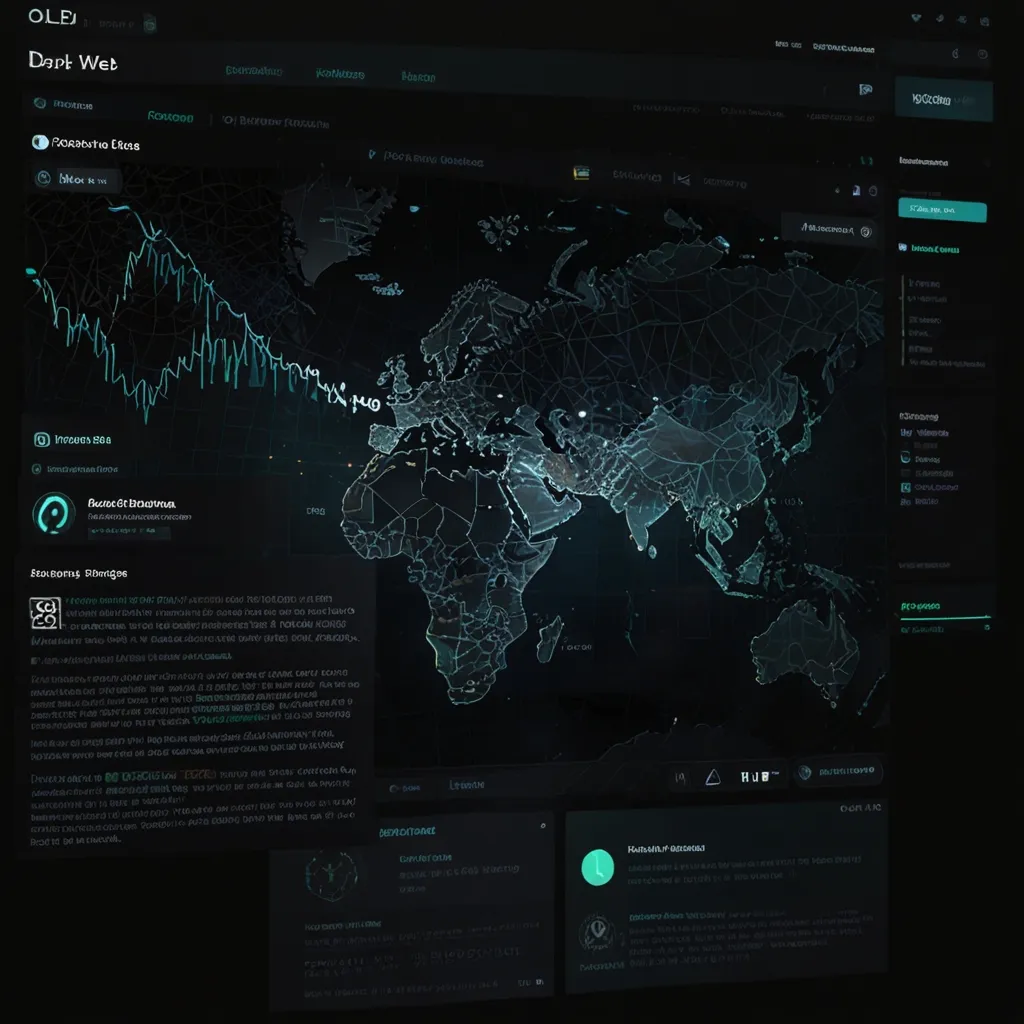The JAMstack architecture has revolutionized how we build and deploy web applications. By separating the frontend from backend concerns, we can create secure, scalable, and high-performance websites that deliver excellent user experiences. I’ve spent years working with JAMstack sites, and I’d like to share strategies that have proven effective in my projects.
Understanding JAMstack Fundamentals
JAMstack stands for JavaScript, APIs, and Markup. This architecture relies on pre-rendered static files served from CDNs, with dynamic functionality handled through APIs and serverless functions. The core benefit is simplicity: static sites are inherently more secure, faster, and easier to scale than traditional server-rendered applications.
The foundation of any JAMstack site is static HTML generation. Tools like Gatsby, Next.js, Nuxt.js, and Hugo can convert your content into optimized static assets during the build process. These files are then deployed to global CDNs, ensuring fast load times regardless of user location.
Setting Up a JAMstack Project
Starting a JAMstack project involves selecting appropriate tools. For React developers, Gatsby and Next.js are excellent choices. Vue developers might prefer Nuxt.js, while those seeking simplicity might choose Eleventy.
Let’s look at how to set up a basic Next.js JAMstack site:
// Install Next.js
npm install next react react-dom
// Add scripts to package.json
{
"scripts": {
"dev": "next dev",
"build": "next build && next export",
"start": "next start"
}
}
// Create a simple page (pages/index.js)
export default function Home() {
return (
<div>
<h1>My JAMstack Site</h1>
<p>Welcome to my static site built with Next.js</p>
</div>
)
}
The next export command in the build script generates static HTML files that can be deployed to any static hosting service.
Integrating Serverless Functions
One of the most powerful aspects of JAMstack is the ability to incorporate dynamic functionality through serverless functions. These are small, focused pieces of backend code that run on-demand in a stateless environment.
Platforms like Netlify Functions, Vercel Functions, and AWS Lambda make it easy to add server-side capabilities without managing infrastructure.
Here’s how to create a simple serverless function for a contact form:
// functions/contact-form.js
exports.handler = async (event, context) => {
// Ensure it's a POST request
if (event.httpMethod !== 'POST') {
return { statusCode: 405, body: 'Method Not Allowed' };
}
try {
const data = JSON.parse(event.body);
// Validate inputs
if (!data.email || !data.message) {
return {
statusCode: 400,
body: JSON.stringify({ error: 'Email and message are required' })
};
}
// Send the data to an email service like SendGrid
const sendResult = await sendEmail({
to: '[email protected]',
from: data.email,
subject: 'New contact form submission',
text: data.message
});
return {
statusCode: 200,
body: JSON.stringify({ message: 'Message sent successfully' })
};
} catch (error) {
return {
statusCode: 500,
body: JSON.stringify({ error: 'Failed to send message' })
};
}
};
To call this function from your frontend:
// Contact form component
function ContactForm() {
const [formData, setFormData] = useState({ email: '', message: '' });
const [status, setStatus] = useState('');
const handleSubmit = async (e) => {
e.preventDefault();
setStatus('sending');
try {
const response = await fetch('/.netlify/functions/contact-form', {
method: 'POST',
body: JSON.stringify(formData)
});
const result = await response.json();
if (response.ok) {
setStatus('success');
setFormData({ email: '', message: '' });
} else {
setStatus('error');
console.error(result.error);
}
} catch (error) {
setStatus('error');
console.error('Submission error:', error);
}
};
return (
<form onSubmit={handleSubmit}>
{/* Form fields */}
</form>
);
}
Implementing Authentication
Authentication in JAMstack sites requires a different approach compared to traditional applications. Since we don’t have a persistent server, we rely on authentication providers and JWTs (JSON Web Tokens).
I’ve found these approaches effective:
- Third-party authentication providers like Auth0, Firebase Auth, or Supabase
- OAuth flows with providers like Google, GitHub, or Facebook
- Custom authentication via serverless functions and JWT
Here’s how to implement Auth0 in a Next.js JAMstack site:
// Install required packages
// npm install @auth0/auth0-react
// pages/_app.js
import { Auth0Provider } from '@auth0/auth0-react';
function MyApp({ Component, pageProps }) {
return (
<Auth0Provider
domain="your-domain.auth0.com"
clientId="your-client-id"
redirectUri={typeof window !== 'undefined' ? window.location.origin : ''}
>
<Component {...pageProps} />
</Auth0Provider>
);
}
export default MyApp;
// components/ProtectedPage.js
import { useAuth0 } from '@auth0/auth0-react';
function ProtectedPage() {
const { isAuthenticated, loginWithRedirect, user } = useAuth0();
if (!isAuthenticated) {
return <button onClick={loginWithRedirect}>Log In</button>;
}
return (
<div>
<h1>Welcome, {user.name}</h1>
<p>This content is only visible to authenticated users.</p>
</div>
);
}
For protecting serverless functions, verify the JWT token:
// functions/protected-endpoint.js
import jwt from 'jsonwebtoken';
exports.handler = async (event, context) => {
// Get the Authorization header
const authHeader = event.headers.authorization;
if (!authHeader || !authHeader.startsWith('Bearer ')) {
return {
statusCode: 401,
body: JSON.stringify({ error: 'Unauthorized' })
};
}
// Extract the token
const token = authHeader.split(' ')[1];
try {
// Verify the token (simplified example)
const decoded = jwt.verify(token, process.env.JWT_SECRET);
// The user is authenticated, proceed with the function
return {
statusCode: 200,
body: JSON.stringify({
message: 'Protected data',
data: { userId: decoded.sub }
})
};
} catch (error) {
return {
statusCode: 401,
body: JSON.stringify({ error: 'Invalid token' })
};
}
};
Content Management with Headless CMS
A headless CMS separates content management from presentation, making it perfect for JAMstack sites. Content is retrieved via APIs and rendered as static HTML during the build process.
Popular options include:
- Contentful
- Sanity.io
- Strapi
- Prismic
- Netlify CMS
Here’s how to integrate Contentful with a Next.js site:
// Install dependencies
// npm install contentful
// lib/contentful.js
import { createClient } from 'contentful';
const client = createClient({
space: process.env.CONTENTFUL_SPACE_ID,
accessToken: process.env.CONTENTFUL_ACCESS_TOKEN
});
export async function getEntries(type, options = {}) {
const entries = await client.getEntries({
content_type: type,
...options
});
return entries.items;
}
// pages/index.js
import { getEntries } from '../lib/contentful';
export default function Home({ posts }) {
return (
<div>
<h1>Blog Posts</h1>
<div className="posts-grid">
{posts.map(post => (
<div key={post.sys.id} className="post-card">
<h2>{post.fields.title}</h2>
<p>{post.fields.excerpt}</p>
</div>
))}
</div>
</div>
);
}
export async function getStaticProps() {
const posts = await getEntries('blogPost', {
order: '-sys.createdAt'
});
return {
props: {
posts
},
// Revalidate pages every hour
revalidate: 3600
};
}
Creating Effective Build Pipelines
Efficient build pipelines are crucial for JAMstack sites, especially as content grows. The key is automating the build and deployment process while optimizing for performance.
I recommend implementing these strategies:
- Incremental builds that only rebuild changed pages
- Automated builds triggered by CMS content changes
- Preview environments for content review
- Scheduled builds for time-sensitive content
Netlify offers excellent build hooks that can be triggered from your CMS:
// Example of triggering a Netlify build from a serverless function
// when content changes in your CMS
exports.handler = async (event, context) => {
// Verify the webhook signature from your CMS (implementation varies)
if (!isValidSignature(event)) {
return { statusCode: 403, body: 'Invalid signature' };
}
try {
// Trigger Netlify build
const response = await fetch(
'https://api.netlify.com/build_hooks/YOUR_BUILD_HOOK_ID',
{ method: 'POST' }
);
if (response.ok) {
return { statusCode: 200, body: 'Build triggered successfully' };
} else {
throw new Error('Failed to trigger build');
}
} catch (error) {
return { statusCode: 500, body: error.message };
}
};
Performance Optimization Techniques
JAMstack sites are fast by default, but we can make them even faster with these techniques:
- Code splitting and lazy loading
- Optimized asset delivery
- Efficient data fetching patterns
- Image optimization
Here’s how to implement image optimization with Next.js:
// pages/index.js
import Image from 'next/image';
export default function Home() {
return (
<div>
<h1>Optimized Images</h1>
<div className="image-gallery">
<Image
src="/images/hero.jpg"
alt="Hero image"
width={1200}
height={600}
layout="responsive"
priority
/>
{/* Lazy-loaded images further down the page */}
<div className="image-grid">
{[1, 2, 3, 4].map(id => (
<Image
key={id}
src={`/images/gallery-${id}.jpg`}
alt={`Gallery image ${id}`}
width={400}
height={300}
layout="responsive"
/>
))}
</div>
</div>
</div>
);
}
Security Considerations
JAMstack sites eliminate many traditional security concerns, but they introduce new ones. I always implement these security measures:
- Proper authentication and authorization for APIs and functions
- Environment variable management for secrets
- CORS policies for API endpoints
- Rate limiting for serverless functions
Here’s an example of implementing rate limiting on a serverless function:
// functions/rate-limited-api.js
const RATE_LIMIT_WINDOW_MS = 60 * 1000; // 1 minute
const MAX_REQUESTS_PER_WINDOW = 10;
// Simple in-memory store (use Redis or similar in production)
const requestCounts = {};
exports.handler = async (event, context) => {
const ip = event.headers['client-ip'] || 'unknown';
const now = Date.now();
// Clean up old entries
Object.keys(requestCounts).forEach(key => {
if (now - requestCounts[key].timestamp > RATE_LIMIT_WINDOW_MS) {
delete requestCounts[key];
}
});
// Check if IP is rate limited
if (!requestCounts[ip]) {
requestCounts[ip] = {
count: 1,
timestamp: now
};
} else {
// Increment request count
requestCounts[ip].count += 1;
// Check if over limit
if (requestCounts[ip].count > MAX_REQUESTS_PER_WINDOW) {
return {
statusCode: 429,
body: JSON.stringify({ error: 'Too Many Requests' }),
headers: {
'Retry-After': '60'
}
};
}
}
// Process the actual API request
return {
statusCode: 200,
body: JSON.stringify({ message: 'API response' })
};
};
Handling Form Submissions
Forms are common in websites but require special handling in JAMstack. I use these approaches:
- Serverless functions to process form data
- Third-party form services like Formspree or Netlify Forms
- Direct API calls to backend services
Here’s how to use Netlify Forms with HTML:
<!-- Add the data-netlify="true" attribute to enable Netlify Forms -->
<form name="contact" method="POST" data-netlify="true">
<p>
<label>Name: <input type="text" name="name" required /></label>
</p>
<p>
<label>Email: <input type="email" name="email" required /></label>
</p>
<p>
<label>Message: <textarea name="message" required></textarea></label>
</p>
<!-- Required for Netlify Forms -->
<input type="hidden" name="form-name" value="contact" />
<p>
<button type="submit">Send</button>
</p>
</form>
For React applications:
// ContactForm.js
import { useState } from 'react';
export default function ContactForm() {
const [formData, setFormData] = useState({
name: '',
email: '',
message: ''
});
const handleChange = (e) => {
setFormData({
...formData,
[e.target.name]: e.target.value
});
};
const handleSubmit = async (e) => {
e.preventDefault();
try {
// Encode data for Netlify Forms
const encodedData = new URLSearchParams();
Object.keys(formData).forEach(key => {
encodedData.append(key, formData[key]);
});
encodedData.append('form-name', 'contact');
// Submit the form
const response = await fetch('/', {
method: 'POST',
headers: { 'Content-Type': 'application/x-www-form-urlencoded' },
body: encodedData.toString()
});
if (response.ok) {
alert('Form submitted successfully!');
setFormData({ name: '', email: '', message: '' });
} else {
throw new Error('Form submission failed');
}
} catch (error) {
console.error('Error:', error);
alert('There was an error submitting the form.');
}
};
return (
<form name="contact" onSubmit={handleSubmit} data-netlify="true">
{/* Form fields */}
<input type="hidden" name="form-name" value="contact" />
</form>
);
}
Handling Dynamic Content
Even though JAMstack sites are static, they can display dynamic content through these strategies:
- Client-side data fetching after page load
- Incremental Static Regeneration (ISR) for content that changes occasionally
- Scheduled rebuilds for predictable content updates
Here’s how to implement client-side data fetching with React Query:
// Install dependencies
// npm install react-query
// components/DynamicContent.js
import { useQuery } from 'react-query';
function DynamicContent() {
const { data, isLoading, error } = useQuery('recentData', async () => {
const response = await fetch('/api/recent-data');
if (!response.ok) {
throw new Error('Failed to fetch data');
}
return response.json();
});
if (isLoading) return <div>Loading...</div>;
if (error) return <div>Error: {error.message}</div>;
return (
<div>
<h2>Recent Updates</h2>
<ul>
{data.items.map(item => (
<li key={item.id}>{item.title}</li>
))}
</ul>
</div>
);
}
For Next.js, Incremental Static Regeneration provides a powerful middle ground:
// pages/posts/[slug].js
export default function Post({ post }) {
return (
<article>
<h1>{post.title}</h1>
<div dangerouslySetInnerHTML={{ __html: post.content }} />
</article>
);
}
export async function getStaticPaths() {
// Get a subset of posts at build time
const posts = await getPosts({ limit: 10 });
return {
paths: posts.map(post => ({ params: { slug: post.slug } })),
// Enable on-demand generation for paths not generated at build time
fallback: 'blocking'
};
}
export async function getStaticProps({ params }) {
try {
const post = await getPostBySlug(params.slug);
return {
props: { post },
// Regenerate this page when requested, at most once every 10 minutes
revalidate: 600
};
} catch (error) {
return { notFound: true };
}
}
Deploying JAMstack Applications
Deployment is straightforward with platforms like Netlify, Vercel, and AWS Amplify. These services offer:
- Git-based deployments
- Preview environments for pull requests
- Custom domains with automatic SSL
- CDN distribution
- Serverless function hosting
Here’s a simple configuration for Netlify:
# netlify.toml
[build]
command = "npm run build"
publish = "out"
functions = "functions"
# Redirect rule for SPA routing
[[redirects]]
from = "/*"
to = "/index.html"
status = 200
# Headers for security
[[headers]]
for = "/*"
[headers.values]
X-Frame-Options = "DENY"
X-XSS-Protection = "1; mode=block"
Content-Security-Policy = "default-src 'self'"
Referrer-Policy = "strict-origin-when-cross-origin"
Monitoring and Analytics
Monitoring JAMstack sites requires different tools than traditional applications. I use:
- Client-side analytics like Google Analytics or Plausible
- Serverless function logs
- Error tracking with Sentry
- Performance monitoring with Lighthouse
Here’s how to add Sentry to a Next.js application:
// Install dependencies
// npm install @sentry/nextjs
// next.config.js
const { withSentryConfig } = require('@sentry/nextjs');
const moduleExports = {
// Your existing Next.js config
};
const SentryWebpackPluginOptions = {
// Additional config options for the Sentry Webpack plugin
};
// Make sure to add withSentryConfig at the end
module.exports = withSentryConfig(moduleExports, SentryWebpackPluginOptions);
// pages/_app.js
import * as Sentry from '@sentry/nextjs';
// Initialize Sentry
Sentry.init({
dsn: "your-dsn-url",
tracesSampleRate: 1.0,
});
function MyApp({ Component, pageProps }) {
return <Component {...pageProps} />;
}
export default MyApp;
Conclusion
JAMstack architecture offers a compelling approach to web development that delivers security, performance, and scalability. By separating the frontend from the backend, leveraging CDNs, and using serverless functions for dynamic features, we can create exceptional web experiences.
I’ve found that the JAMstack approach forces me to think differently about architecture, leading to cleaner, more maintainable code. The best practices outlined here have helped me build robust applications that are easier to maintain and scale.
As the web continues to evolve, JAMstack principles will remain relevant because they align with the fundamental goal of delivering fast, secure, and reliable experiences to users. By adopting these strategies, you’ll be well-equipped to build the next generation of web applications.






